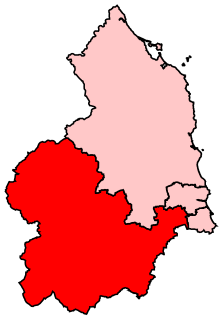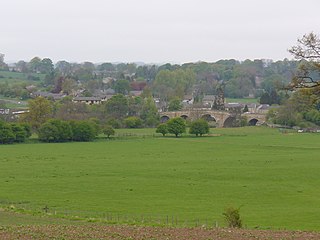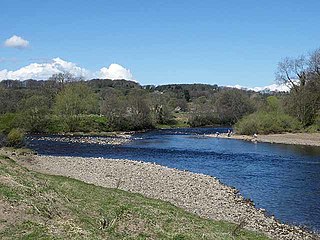| Chollerton | |
|---|---|
 Chollerton Farm | |
Chollerton shown within Northumberland | |
| Population | 818 (2011) [1] |
| OS grid reference | NY935725 |
| Unitary authority | |
| Ceremonial county | |
| Region | |
| Country | England |
| Sovereign state | United Kingdom |
| Post town | HEXHAM |
| Postcode district | NE46 |
| Dialling code | 01434 |
| Police | Northumbria |
| Fire | Northumberland |
| Ambulance | North East |
| EU Parliament | North East England |
| UK Parliament | |
Chollerton is a village in Northumberland, England, on the A6079 road about six miles (10 km) to the north of Hexham, on the River North Tyne. Nearby villages include Low Brunton and Humshaugh. The village has a fine example of a mounting block standing at the churchyard gate. [2]
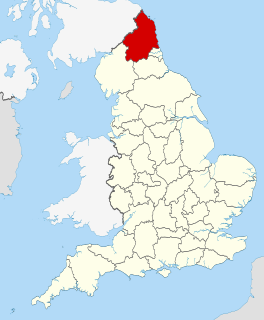
Northumberland is a county in North East England. The northernmost county of England, it borders Cumbria to the west, County Durham and Tyne and Wear to the south and the Scottish Borders to the north. To the east is the North Sea coastline with a 64 miles (103 km) path. The county town is Alnwick, although the County council is based in Morpeth.
The A6079 is a road in Northumberland, northern England, that runs eight miles (13 km) from Hexham to the A68 road. The road begins off the A69 road to the north of Hexham, before passing the villages of Acomb and Wall before meeting the B6318 road just to the south of Chollerford - unusually, traffic on the A6079 must give way to the traffic on the B6318, despite the fact that "A"-roads are more important than "B"-roads. The A6079 continues through the village of Chollerton, and terminates at its junction with the A68 road to Edinburgh, nine miles (14 km) north-west of Corbridge.

Hexham is a market town and civil parish in Northumberland, England, south of the River Tyne, and was the administrative centre for the Tynedale district from 1974 to 2009. In 2011, it had a population of 11,829.
Contents
The church, built around the 12th Century from local stone quarried from nearby. dedicated to Saint Giles, is noteworthy for the four large Roman columns built into its south aisle. These are believed to have been brought from the Roman fort of Chesters a couple of miles downstream.

Saint Giles, also known as Giles the Hermit, was a Greek, Christian, hermit saint from Athens, whose legend is centered in Provence and Septimania. Giles founded the abbey in Saint-Gilles-du-Gard whose tomb became a place of pilgrimage. It was a stop on the road that led from Arles to Santiago de Compostela, the pilgrim Way of St. James. Giles is one of the Fourteen Holy Helpers.
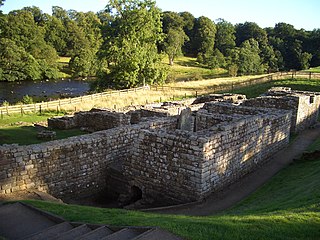
Cilurnum or Cilurvum was a fort on Hadrian's Wall mentioned in the Notitia Dignitatum. It is now identified with the fort found at Chesters near the village of Walwick, Northumberland, England. It was built in 123 AD, just after the wall's completion.
Chollerton is also a registration sub-district in Northumberland; its population in 1851 was 5024 people. [3]
The etymology of the name Chollerton is uncertain; possibly it is from the Old English "Ceolferth's tun" but more likely it meant "tun by Ceolan ford or Ceolford", if so "Ceolford" meant "Ceola's ford" (i.e. modern Chollerford). [4] [5]


